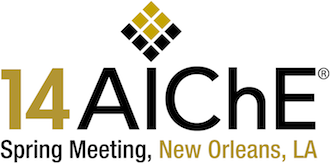

The objective of this project done in Braskem Company, that has 25 sites in Brazil, 5 sites in USA and 2 sites in Germany was analyze the current stage of identification, control and management of the main process accidental scenarios (Major Hazard) that can happen at Braskem Units. It was done during 2 years. This evaluation is based on process safety standards and Braskem risk criteria, as well as good practices in process safety. The focus is to understand the main scenarios and hazards (Major Accident Hazards) and how its controls are being managed, in order to allow for operation of the units under acceptable risk conditions. The motivation for this study is the identification of some conditions in BRASKEM that indicates the need of a more in deep knowledge of the main scenarios related to process safety from BRASKEM units. Among this factor, some as indicated below:
a) Units in different stages of knowledge of its scenarios with major damage, their risk levels and barriers condition;
b) Accelerated non organic growth, incorporating assets with different knowledge and culture related to process safety and knowledge of their risks and barriers integrity;
c) Large number of scenarios with level of consequences critical or catastrophic, with potential to cause important damage to plants and reach externally of the units (residential population or other companies);
d) Occurrence of accidental scenarios over the last months, indicating the need of a better understanding of those scenarios and their barriers;
e) Need to increase visibility of major hazards to the high levels of leadership in BRASKEM to show their importance for the decisions related to the sustainability of the business.
In this project were involved 35 sites, raw material units and resins sites more than 650 process Scenarios and more than 5,000 preventive and mitigating barriers were audited. A very rich information and statistics data were generated. Below are the phases that show all phases since selection of scenarios until quantitative studies.
Methodology developed in all four phases:
In phase 1, were asked the following main information from each plant:
a) Risk Studies (qualitative and quantitative) in the units in the last 5 years
b) If there are no studies in the last 5 years, previous studies
c) Process flow diagram of the plant
d) Inventory list of products
e) Layout of the units
f) Aerial photos with the region around the unit
g) PMP scenario ( maximum loss related to process scenario)
In Phase 2
a) For each scenario defined previously, the protection and mitigation barriers will be identified, through studies of risk information and validation with the teams of the plants involved;
b) The Audit of Barriers methodology applied at Braskem will be used for monitoring the condition of each barrier, proposing recommendations to improve the barrier integrity condition, if necessary;
c) It will set a frequency for monitoring of these barriers, for keeping the integrity of them. If necessary LOPA and SIL studies can be applied to better support these settings;
d) In the monitoring phase, the recommendations generated in risk studies will also be evaluated, regarding the status of implementation;
e) For the scenarios which have their barriers audited in less than one year, only the status of recommendations will be evaluated.
In phase 3
a) Information and indicators will be established to be used for monitoring the condition of the scenarios, considering the different processes of governance, defined in the element 02, the organizational synergy SEMPRE (plant, the industrial unit and the Executive Committee);
b) The frequency of monitoring, form of governance and information flow will be set.
In Phase 4 - Quantitative Studies
a) Prepare, or complement, quantitative studies of the units, so for the units in which there is no complete or recent study, in the selection of scenarios included in the previous steps will be validated / added the new scenarios identified.
b) For road transport: the calculation will be done for up to 30 scenarios, each one defined by product and location of leakage.
c) For pipelines: the calculation will be done for up to 10 different points of leakage.
d) For processing plants and terminals: accidental scenarios which have potential to achieve residential or industrial areas, not Braskem, with effect of 1% fatality or lower flammable limit, will be included.
e) Initially the LOPA study must be applied for all PHRs (Potential High Risk) identified in the plant, complementing the other scenarios, as requirements of Risk Matrix and Five-Year Plan.
Final Comments
This project was an important opportunity in Braskem to improve the process safety system and also the process safety culture, considering that the results showed how to manage the major hazard scenarios and how to assure the commitment of leaders and the participation of all related areas as maintenance , operation, process and design engineer, logistics, supply and others.
